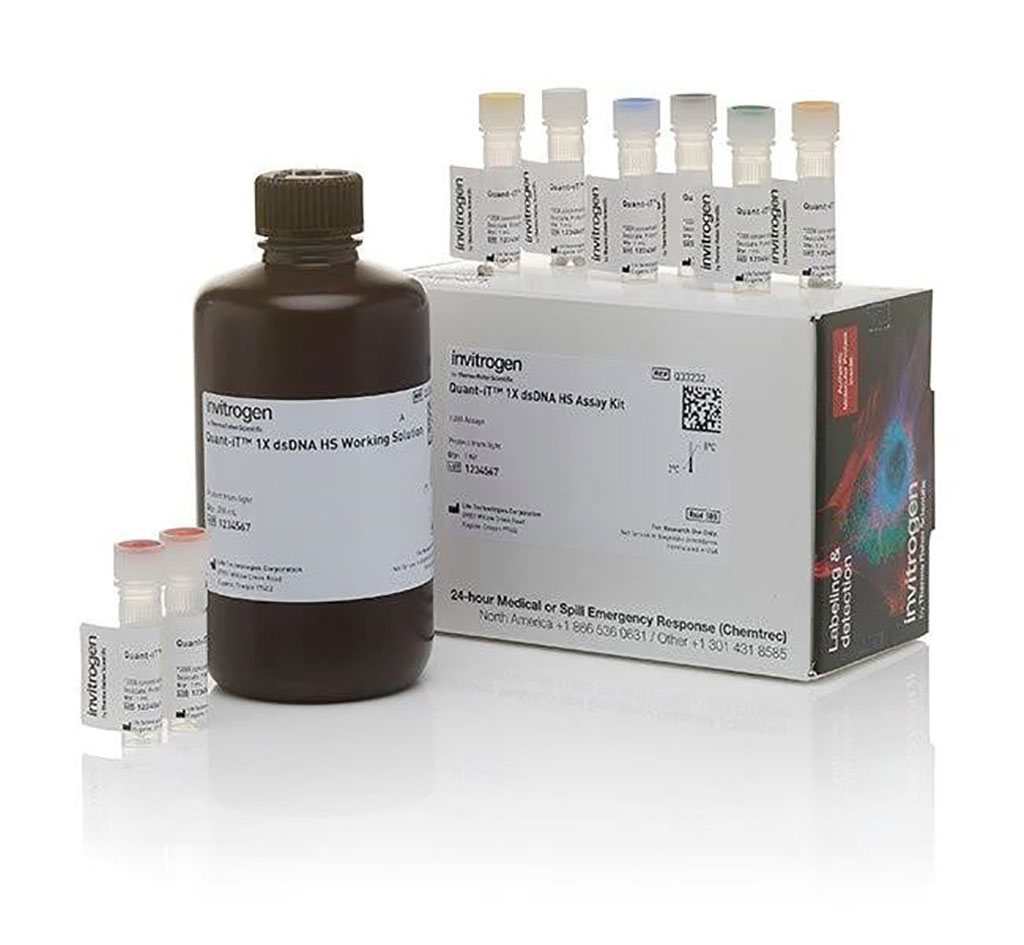Automated Detection of Arm-Level Alterations for Individual Cancer Patients
By LabMedica International staff writers
Posted on 25 Sep 2021
Copy number alterations (CNAs) can be gains, losses, or loss of heterozygosity (LOH) of a chromosome segment. Based on the length of the altered segment, they are crudely classified as “focal alterations” and “arm-level alterations”.Posted on 25 Sep 2021
While genome-wide techniques to detect arm-level alterations are gaining momentum in hospital laboratories, the high precision and novelty of these techniques pose new challenges. There is no consensus on the definition of an arm-level alteration and a lack of tools to compute them for individual patients.

The Quant-iT 1X dsDNA HS (High-Sensitivity) Assay Kit is designed to make DNA quantitation easy and accurate. The assay is highly selective for double-stranded DNA (dsDNA) over RNA (Photo courtesy of Thermo Fisher Scientific)
Clinical Scientists at the Geneva University Hospital (Geneva, Switzerland) performed OncoScan FFPE assays (Thermo Fisher Scientific, Waltham, MA, USA) for more than 400 patients as part of the routine laboratory analyses from 2016 to 2018. The median age at the time of analysis was 59 years for females and 60 years for males. Among these 376 samples, 25 were manually selected to validate the method against the expert annotations from the clinical report. Centered on the content of the clinical reports, the selection was made to represent a diverse range of arm-level alterations in terms of chromosomal distribution, CNA type (Gain versus. Loss of copies), tumor ploidy, and the number of arms altered.
Genomic DNA was purified from Formalin-Fixed Paraffin-Embedded (FFPE) tumor tissues using QIAamp DNA FFPE Tissue Kit (QIAGEN (Hilden, Germany) and quantified using the Quant-iT dsDNA HS Assay Kit (Life Technologies, CA, USA). The arrays were stained in GeneChip Fluidics Station (Thermo Fisher Scientific) and scanned using the Gene Chip scanner. The OncoScan assay has a genome-wide resolution of 300Kbp and an even finer 50-100Kbp resolution on ∼ 900 cancer genes.
The team observed a bimodal distribution of the percentage of bases with CNAs within a chromosomal arm, with the second peak starting at 90% of arm length. They tested two approaches for the definition of arm-level alterations: sum of altered segments (SoS) >90% or the longest segment (LS) >90%. The approaches were validated against expert annotation of 25 clinical cases. The SoS method outperformed the LS method with a higher concordance (SoS: 95.2 %, LS: 79.9 %). Some of the discordances were ultimately attributed to human error, highlighting the advantages of automation. The investigators observed that both computational approaches (SoS and LS) showed a high number of arm-level alterations (Gain (27), Loss (14) and LOH (8)), which were missed by the manual annotation, but detected by this approach.
The authors concluded that their computational method is highly accurate and robust for detecting copy number alterations across diverse cancer types in a clinical setting. The method performs as accurately as human experts, but at a fraction of the time. A software tool also increases reliability, as typographic and annotation errors were observed in some manually curated cases. The method and tool they described are now routinely used in the Department of Clinical Pathology at the Geneva University Hospitals and are available to the community. The study was published on August 25, 2021 in The Journal of Molecular Diagnosis.
Related Links:
Geneva University Hospital
Thermo Fisher Scientific
QIAGEN
Life Technologies




 assay.jpg)


 Analyzer.jpg)


 (3) (1).png)


